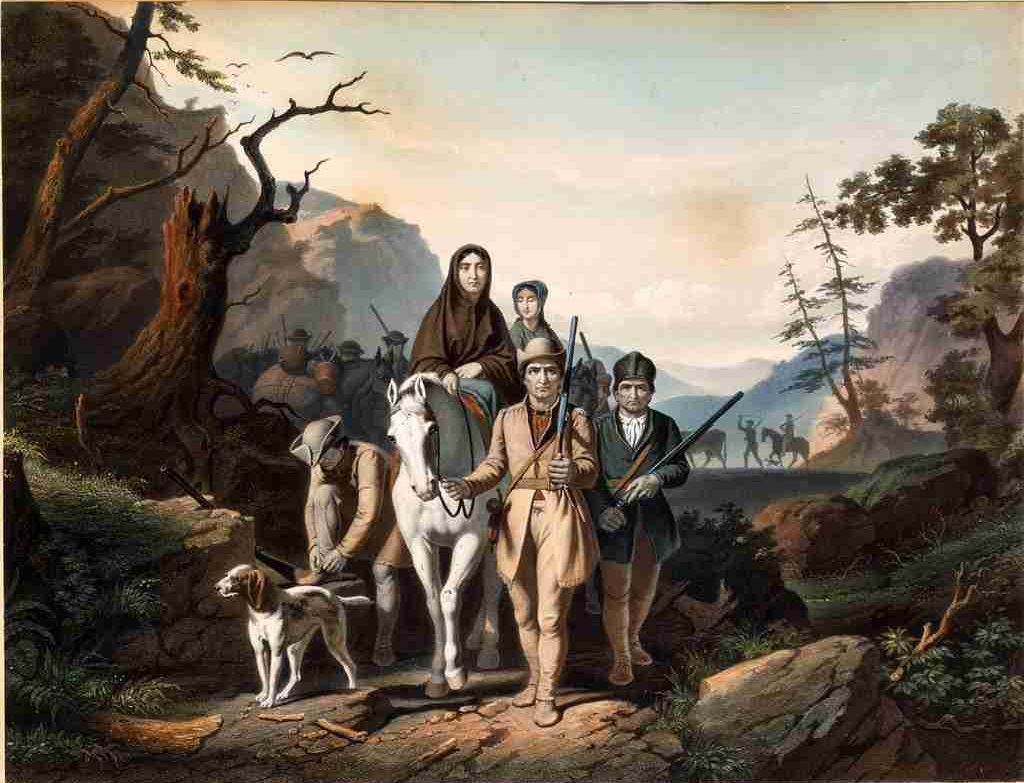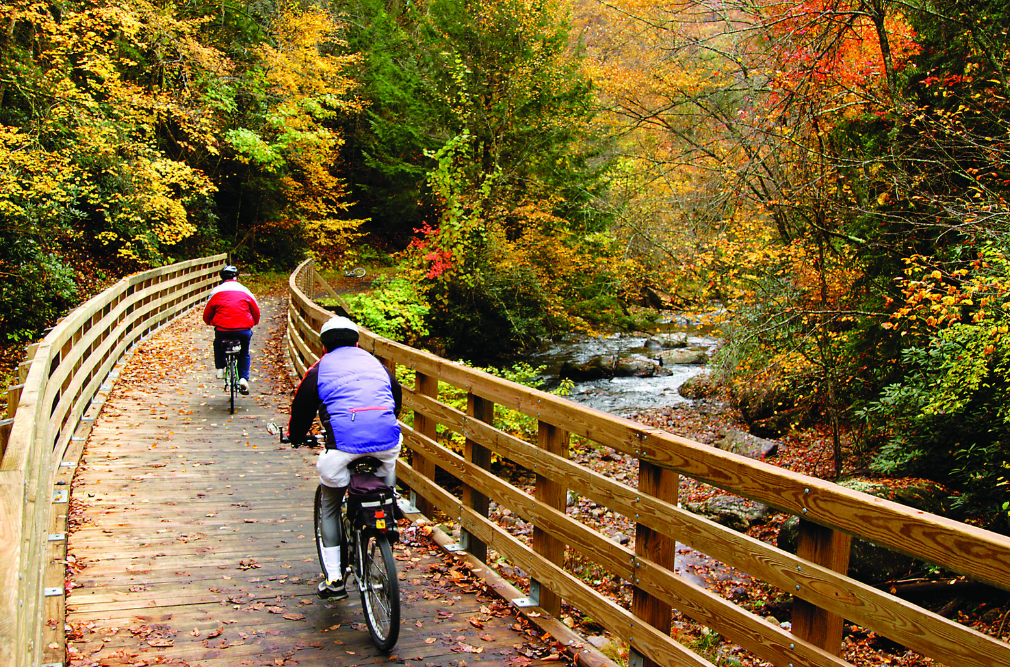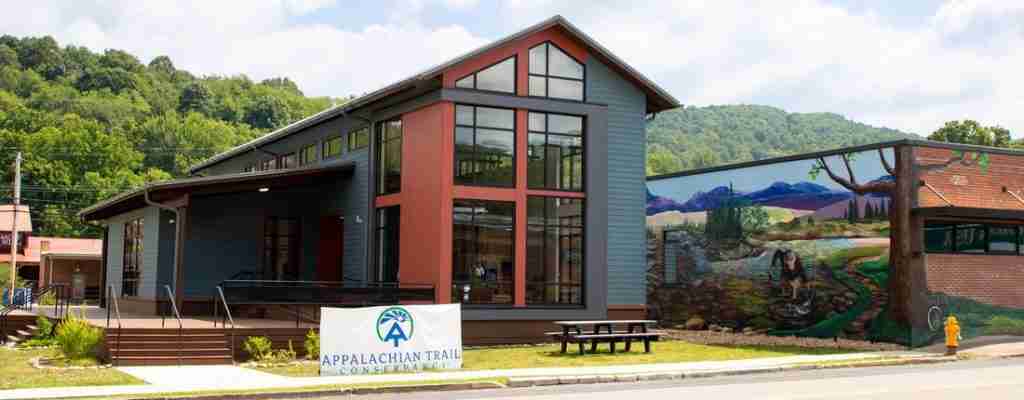Seven Trails to Damascus, VA

From Damascus, Syria, to Damascus, VA
For nearly ten thousand years, the ancient city of Damascus has flourished in southwestern Syria. Sitting at the crossroads of trade routes between Africa and Asia, the city has always been a hub for craftsmanship and culture.
Like its namesake city, Damascus, Virginia, sits at the intersection of former trade routes and serves as a cultural hub. But these days, the trade routes (railroads and rivers, mostly) have been converted to recreational use. The town sits at the crossroads of seven trails. It is a destination for hikers, cyclists, music lovers, and wildlife enthusiasts.

Native Americans, Daniel Boone, and the Wilderness Road
Nestled in the Blue Ridge Mountains of southwestern Virginia, Damascus has always been where paths cross. Long before it earned its reputation as “Trail Town, USA,” this area was a crucial junction for Native American trails and early settlers. Its location, cradled by the mountains and enriched by the confluence of numerous streams, made it a natural gathering point. The land here is fertile, and the forests are dense and brimming with wildlife. Boasting an abundance of food and resources, the bounty of the Blue Ridge Mountains drew settlers by the thousands.
The town was officially established in the late 19th century, but its significance as a crossroads stretches further. Following the routes carved by indigenous peoples, early European settlers found Damascus a strategic spot for trade and travel. Over time, it grew into a small but bustling community.
Trails Timeline
As America expanded westward, the need for paths through the rugged Appalachian terrain became paramount. Early explorers and settlers blazed trails that would eventually intertwine in Damascus. Each trail contributes its unique story, reflecting the history of the area.
Here is a timeline highlighting key moments in the development of the trails that showcase the evolution of this historic crossroads:
Pre-history: Native Americans followed wildlife paths to obtain food and resources.
1759: Daniel Boone blazed a trail. Evidence shows Boone’s original path in 1759 likely passed near present-day Damascus. While the official Wilderness Road he established in 1775 went through Kentucky, Boone is believed to have explored the area earlier, with Damascus falling along the route he used. Today’s Daniel Boone Heritage Trail isn’t a single hiking path but a scenic driving route highlighting Boone’s legacy.
1914:. Beginning in 1914, steam locomotives pulled heavy loads up Whitetop Mountain’s steep grades and hairpin turns. However, the rails were torn up in 1977 and converted to the Virginia Creeper Trail in the 1980s.
1930: The Appalachian Trail began in the 1930s and was rerouted through Damascus in 1950.
1950: When the Appalachian Trail was rerouted in 1950, the unused portion was renamed the Iron Mountain Trail.
1976: Trans-America National Bicycle Trail was conceptualized during the American bicentennial in 1976. Some TransAmerica cyclists ride the Virginia Creeper Trail detour for a scenic downhill experience. This 34-mile trail starts near Whitetop and goes through Damascus.
2003: The Crooked Road, Virginia’s Musical Heritage Trail. The Crooked Road Trail was conceived in 2003 by Virginians interested in promoting the rich musical heritage of the Appalachian region in Southwest Virginia. Having Damascus on the Crooked Road connects visitors with this cultural scene to experience live music or local craftspeople influenced by the region’s musical heritage.
2004: Virginia’s Birding and Wildlife Trail: Damascus’ diverse habitats make it an excellent spot for birdwatching and wildlife observation. The trail promotes conservation and appreciation of Virginia’s natural heritage. The trail was conceived in 1999 and completed in 2004.

The Trails Converge in Damascus: Pivotal Moments
The convergence of these trails in Damascus is no accident. It results from careful planning and a deep appreciation for the area’s natural and historical significance.
Local efforts, driven by passionate community members and supportive organizations, have ensured these trails are maintained and celebrated. They connect points on a map to the hearts and minds of those who traverse them, linking past and present in a continuous journey of discovery.
The decision to repurpose the Virginia Creeper Trail from an old railway line was pivotal. It preserved a piece of history and created a new recreational resource that drew thousands of visitors annually. This success story inspired further initiatives to enhance the town’s trail network and promote its historical and cultural assets.
With its extensive network, the Appalachian Trail naturally brought hikers through Damascus. Following old logging roads, the Iron Mountain Trail intersected with these pathways, adding to the web of trails converging in the town.
Additionally, Damascus, included in the Trans-America National Bicycle Trail, highlighted its strategic importance in long-distance cycling routes. The town’s role in the Crooked Road Music Trail also emphasized its cultural significance, linking the physical trails with the region’s rich musical heritage.
Through these efforts, Damascus has become an icon for small towns that wish to leverage their natural and cultural resources to create a thriving, interconnected community that attracts a wide range of visitors.

Final Thoughts
Standing at the crossroads of these historic trails in Damascus, I am filled with a profound connection to the past and the present. Each trail tells a story of exploration, resilience, and community, weaving Damascus’s historical tapestry. Walking the same paths tread by Native Americans, pioneers, and countless adventurers before me, I sincerely appreciate the town’s enduring spirit and role as a gathering point for those seeking adventure and solace. The convergence of these trails is more than a geographical accident; it’s a testament to the town’s ability to bring people together, forging a shared appreciation for nature, history, and the simple joy of a journey well-traveled. Whether hiking, cycling, or just wandering, Damascus offers a gateway to a deeper understanding of the beauty and interconnectedness of our world.


Comments are closed.